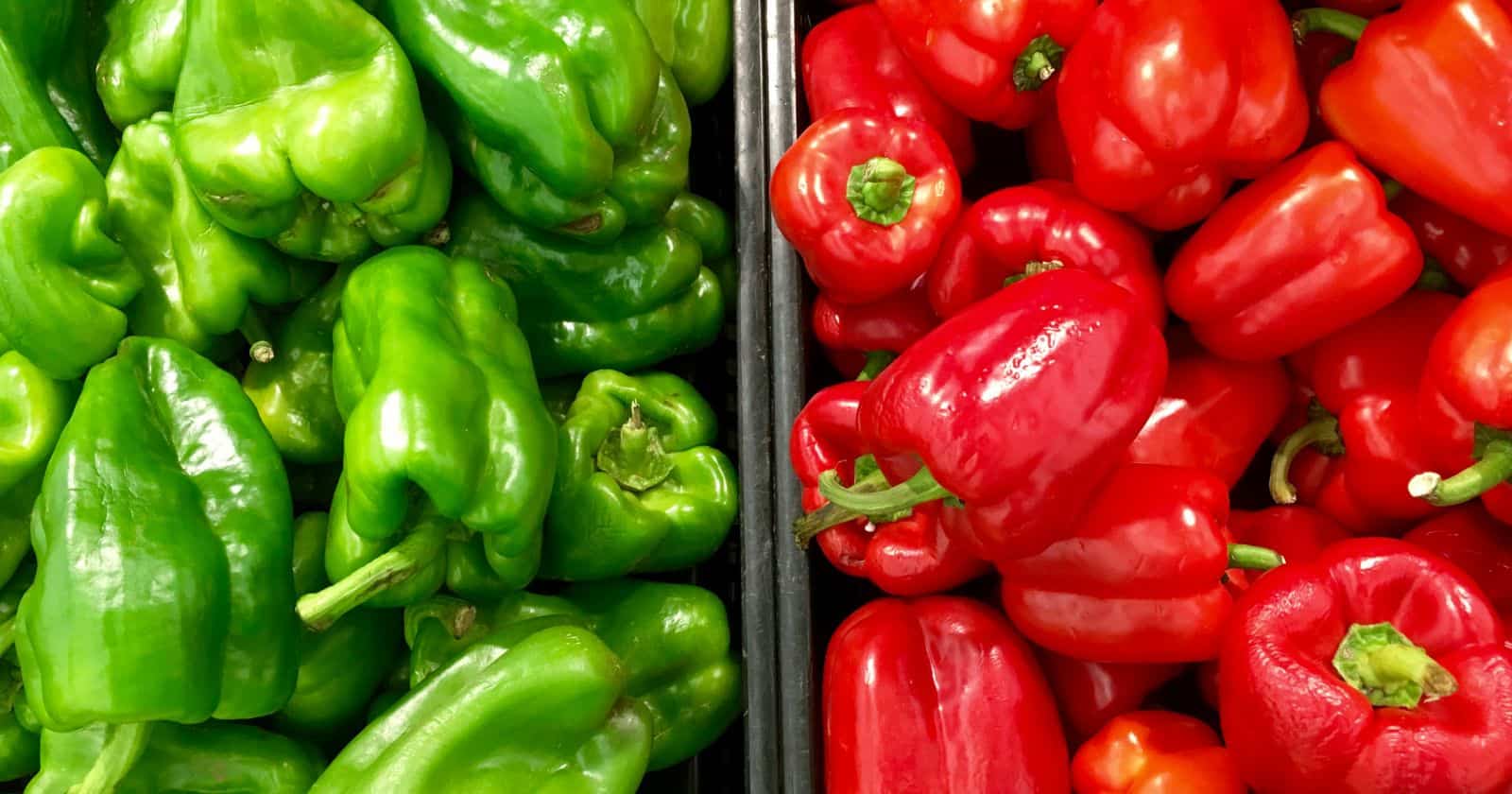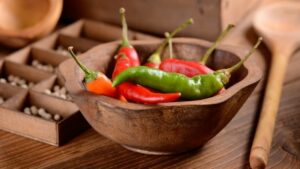peppers turn red?” You’ve tended your plants all season long, but those peppers stay stubbornly green instead of ripening to a rich red color.
Don’t worry, you’re not alone in your frustration! Many gardeners struggle to get their green peppers to fully mature and redden. The good news is there are some common factors that cause this pesky ripening issue. Discover what might be slowing things down and how to coax those green peppers into maturing into vibrant crimson beauties.
In this article, you’ll learn:
- The signs that indicate your pepper ripening is lagging behind
- Key influences like weather, pests, and genetics that affect the maturation process
- Strategies to speed up ripening and turn those green peppers red
- Creative (but risky) ripening hacks to hasten the color change
So what exactly causes peppers to get stuck in an extended green phase? Let’s look at the frustratingly slow signs first.
If your peppers are remaining green and unripe, you may notice:
- The fruits stay small and never reach expected mature size
- The pepper skin feels soft or wrinkled
- The shoulders fail to change from green to red or yellow
When you see these issues, it means your peppers need a little help progressing to their final ripe stage. The good news is that by adjusting care and conditions, you can get your plants back on track to deliver a bountiful harvest of colorful ripe peppers.
The Long Wait – Signs Your Peppers are Lagging Behind
Before we dive into the various factors that could be slowing down ripening, let’s go over the telltale signs that your peppers are taking their sweet time:
- The Color Stays Green – Well, this one’s obvious! If your peppers remain stubbornly green even after the expected maturation time, ripening is delayed.
- Smaller Peppers – Peppers that are smaller than the expected size for that variety may indicate slower growth and ripening.
- Soft Textured Skin – Mature, ripe peppers have shiny, smooth, and taut skin. A soft, wrinkled texture shows immaturity.
- No Color Changes on Shoulders – For bell peppers, color changes first occur on the shoulders before spreading to the rest of the fruit. If the shoulders remain green, your peppers aren’t ripe yet!
If you’ve noticed these issues in your plants, your peppers likely need a nudge in the right direction. Let’s explore why this ripening reluctance happens and how to fix it!
Factors Influencing the Ripening Process
Many different factors can potentially slow down or halt the ripening process in peppers. Here are some of the most common culprits:
Maturity Issues
- Did you harvest too early? Pepper fruits need sufficient time on the plant to fully mature. Plucking them prematurely interrupts the ripening process.
- Cool nighttime temperatures below 55°F can delay maturity. Optimal night temps are 60-70°F.
- Too much nitrogen fertilizer leads to more foliage growth rather than fruit development. Cut back on high nitrogen feeds once fruits start forming.
Environmental Conditions
- Daytime temperatures consistently above 90°F or below 75°F hinder ripening. Ideal daytime range is 80-85°F.
- Low light levels due to excessive shade or diminished sunlight slows maturation. Make sure plants receive at least 6 hours of direct sun.
- Irregular watering affects nutrient absorption, causing slower growth. Stick to a consistent 1-2 inches of water per week.
Poor Pollination
- Lack of pollinating insects leads to low pollination rates, reducing fruit set and growth. Introduce native pollinators to the garden.
- High humidity levels interfere with pollen viability and movement between flowers, lowering fertilization success.
- Cold nighttime temperatures below 55°F inhibit pollen production and release.
Diseases and Pests
- Viruses transmitted by aphids, whiteflies, and other pests disrupt the ripening process. Control populations using neem oil or insecticidal soap sprays.
- Fungal diseases like anthracnose cause blossom end rot and blotchy ripening. Apply fungicides after pruning infected areas.
- Sunscald and blossom end rot due to inconsistent watering leads to scarred, misshapen fruits.
Genetic Factors
- Some specific pepper varieties naturally take longer to change from green to red even when maturity conditions are ideal. Choose faster-ripening options like lipstick, bullnose, or gypsy peppers.
- Hybridized cultivars sometimes have uneven ripening rates, with some fruits lagging behind. Stick to open-pollinated heirloom varieties for uniformity.
Now that we’ve uncovered some of the potential reasons for delayed ripening, let’s discuss solutions to get those peppers reddening quickly!
Tricks to Speed Up Ripening
With a little strategic tweaking of your care regimen, you can give your peppers the ideal conditions to hurry along ripening. Here are some handy tips:
- Monitor Day & Night Temps – Use thermometers and adjust temps to the optimal pepper ripening range.
- Increase Light Exposure – Supplement sunlight with grow lights if needed to get at least 6 hours of direct light.
- Use Fertilizer Sparingly – Go easy on high nitrogen feeds once fruiting begins to help maturation.
- Check Pollination – Use fans, introduce pollinators, and avoid applying pesticides during flowering.
- Practice Consistent Watering – About 1-2 inches per week, avoiding both drought and waterlogging.
- Control Pests & Diseases – Be vigilant and take prompt action at first signs of infestation or infection.
- Harvest at Correct Stage – Use size, shoulder color change, glossiness, and firmness as ripeness indicators.
- Pick Faster Maturing Varieties – Opt for quick reddening peppers like lipstick, gypsy, or bullnose types.
Getting Creative – Hacks to Hasten Reddening
If you need your green peppers to hurry up and turn red, it’s time to try some inventive ripening hacks. But use caution – while these can speed things up, they also come with some trade-offs for flavor or texture.
- Paper Bag Method – Place unripe peppers in a paper bag to trap ethylene gas and initiate quicker ripening.
- Banana Bunch Technique – Add a banana or two to the paper bag. Bananas give off extra ethylene to boost ripening.
- Soaking in Soda – A 12-24 hour soak in soda releases carbon dioxide to hasten color change. But this negatively affects flavor.
- Fatty Acid Sprays – Applying diluted linoleic acid to unripe peppers can encourage faster ripening.
- Solar Box Ripening – A mini solar-heated greenhouse box concentrates sunlight and warmth to accelerate maturation.
So don’t resign yourself yet to forever green peppers. With the right troubleshooting to identify and resolve slowing factors, you’ll be harvesting perfect, ruby-red peppers in no time!





